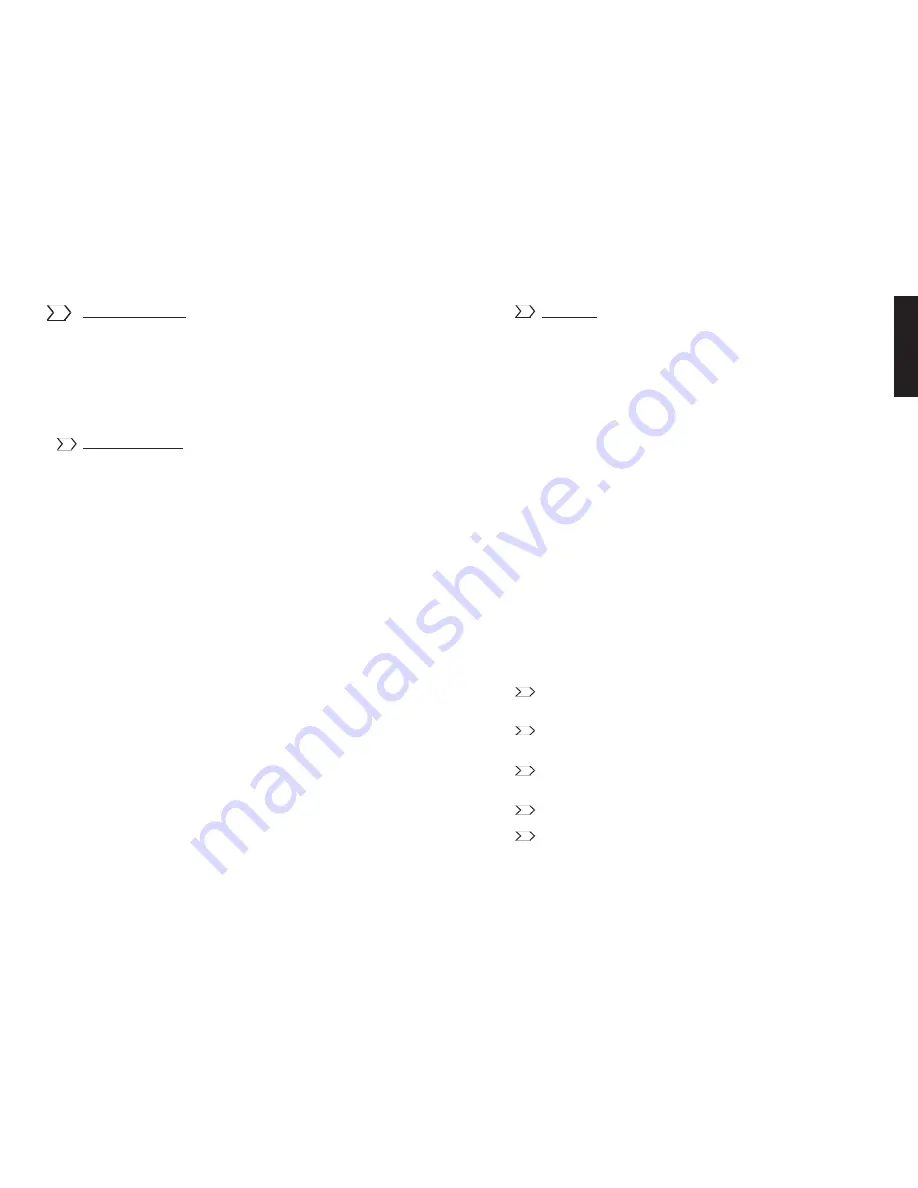
E
NGLISH
B-line stall
Before initiating a b-line stall, the pilot should check sufficient terrain clearance to
fully perform and exit the manoeuvre. It is also imperative the pilot fully commit to
completing the manoeuvre, as a premature release while the glider is still falling
back and not fully stalled may lead to a large diving surge and possibility of pilot
entanglement with the glider. Descent rates exceeding -8 m/s can readily be
achieved.
B-stall is performed by symmetrically pulling down on the B-Risers. It takes a lot
of force to B-line the
CYBER2
but after a certain point it will stall smoothly and
start gaining descent speed. Forward speed will reduce to a minimum.
To initiate a B-line stall: do not release brake handles. Firmly grasp the steel kar-
abiners on each B-riser. Make a deliberate, forceful, sharp pull downward until
your elbows touch your chest (similar to doing a chin-up) and hold in that position.
Do not release either side: the glider will crease along the b-line level; slow and
stall; fall slightly behind the pilot; the pilot will swing back under the canopy; and
finally, the canopy will stabilize overhead in a stable b-line stall. Only once in a
stable b-line stall should the manoeuvre be released. To exit the B-line stall: the
B-risers should be released symmetrically and in one smooth, progressive
motion. The glider should resume normal forward flight without further input.
Check you have forward flight again before using brakes. If forward flight has not
resumed, push gently forward with open palms on each A-riser: the glider will
leave parachutal stall and resume normal flight.
Attention: It is very dangerous to enter or exit a B-line stall incorrectly. The follo-
wing pilot errors must be avoided:
Pulling B-Risers insufficiently or asymmetrically: may result in deep stall
or spin.
Premature release of B-Risers as glider is falling back just starting to
stall: may result in big diving surge.
Pulling B-lines too far so that A-risers are pulled too: may result in roset-
te or front horseshoe.
Pulling C-risers instead of B: may result in full stall.
Slow releasing of B-risers: may result in deep stall.
53
Descent techniques
Fast descents may be appropriate in certain flight situations. Some examples of
when quick descent may improve safety: to descend away from a cumulus cloud
that is generating too much lift; to land before a storm arrives; to land in a small
or restrictive landing area. Your
CYBER2
is capable of several descent techni-
ques. These descent techniques should only be practiced the first time under the
strict supervision of an instructor. We recommend the following manoeuvres, in
order of increasing descent rate potential
Small and Big Ears
Small Ears
is folding in the wing tips of your
CYBER2
to increase the sink rate.
This is useful for staying out of small clouds, descending quickly, or landing in
areas too small to do regular glides in to. To pull Small Ears on the
CYBER2
use
only the outer A-risers and pull them down. After initiating the small ears, you may
also step into your speed system and push it so that the pitch angle of your glider
is compensated and your speed and sink rate further increases. This descent
technique results in descents rates of up to -3.0 m/s.
Doing
Big ears
is only recommended in emergency situations when in need of
higher descent rates for example: descending through strong thermals which
would otherwise pull you into cumulus clouds or approaching storms. To do big
ears: sit upright and take only the outer 2 A-lines one each side of the glider (not
the entire A-risers). Pull them slow and in one smooth motion, so that nearly 25%
of the wing is collapsed on each side. Note that once big ears are in, you have
less wing area supporting you and your stall speed will have increased. Do not
use brakes other than for re-inflation. For directional control while using the big
ears, you should use weight shift. After initiating the big ears, you may also step
into your speed system and push it so that pitch angle of your glider is compen-
sated and your speed and sink rate further increases. This descent technique
results in descent rates of up to -4.5 m/s.
To re-open the wing tips, smoothly release the speed system and then the lines.
Normally wing tips will re-inflate automatically. You can help the process by lea-
ning away from the side you want to re-inflate and gently pumping the brakes. Do
this one side at the time to minimize the chance of inducing a stall.
WARNING: DO NOT USE SMALL OR BIG EARS NEAR THE GROUND!
52
Содержание CYBER2
Страница 12: ...25 D EUTSCH 24 CYBER2...
Страница 15: ...D EUTSCH DHV Testflugprotokoll CYBER2 m 31 30 DHV Testflugprotokoll CYBER2 s...
Страница 16: ...DHV Testflugprotokoll CYBER2 L 32 33 D EUTSCH...
Страница 17: ...D EUTSCH 35 34...
Страница 35: ...71 DHV Test report CYBER2 m E NGLISH 70 DHV Test report CYBER2 s...












































